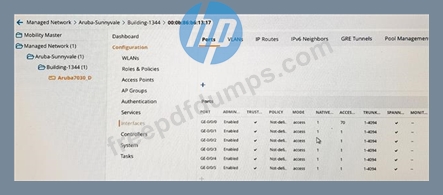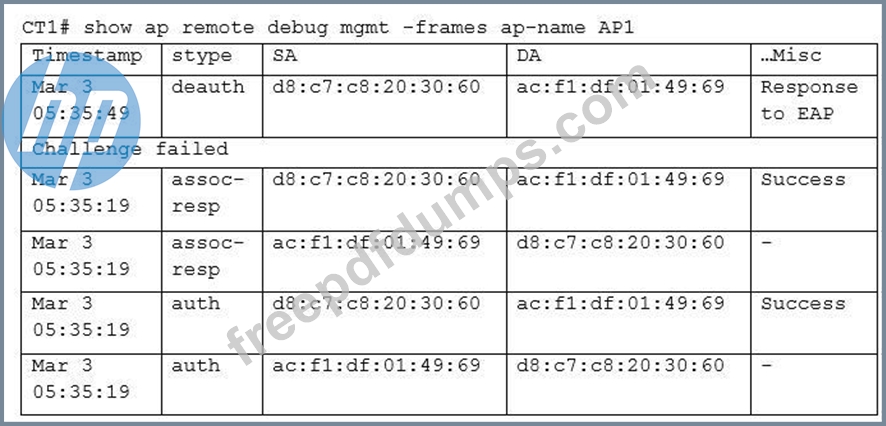HPE6-A71 Exam Question 121
Refer to the exhibit.

An administrator configures a split-tunnel policy to be used by RAPs at branch offices. Under theConfiguration section on the Mobility master (MM) shown in the exhibit, where should the administrator configure the split-tunnel mode so that it can be deployed to the RAPs?

An administrator configures a split-tunnel policy to be used by RAPs at branch offices. Under theConfiguration section on the Mobility master (MM) shown in the exhibit, where should the administrator configure the split-tunnel mode so that it can be deployed to the RAPs?
HPE6-A71 Exam Question 122
Refer to the exhibit.

A user uses a wireless client for a wireless session. Based on the output shown in the exhibit for the selected Aruba AP, what is the possible problem with this user's wireless session?

A user uses a wireless client for a wireless session. Based on the output shown in the exhibit for the selected Aruba AP, what is the possible problem with this user's wireless session?
HPE6-A71 Exam Question 123
An administrator currently manages an L2 cluster with Aruba Mobility Controllers (MCs) that run ArubaOS
8.x. What happens when the administrator enables AP load balancing?
8.x. What happens when the administrator enables AP load balancing?
HPE6-A71 Exam Question 124
An administrator supports a RAP to abranch office. Employees at the branch office connect to an employee SSID that allows for split tunneling of the employee traffic. The RAP initially connects to the corporate office controller, but later loses connectivity to it.
Which operating mode should the administrator configure for a secondary SSID to be advertised during the loss of connectivity?
Which operating mode should the administrator configure for a secondary SSID to be advertised during the loss of connectivity?
HPE6-A71 Exam Question 125
Refer to the exhibit.

An AP is connected to a cluster of controllers. An AAA server provides all authentication and authorization functions for wireless users. A wireless user connects to an AP, and Active User Anchor Controller (A-UAC) and Standby UAC (S-UAC) tunnels are built from the AP to the respective controllers in the cluster.
Why would an administrator create four VRRP groups with four Virtual IP (VIP) addresses in the cluster?

An AP is connected to a cluster of controllers. An AAA server provides all authentication and authorization functions for wireless users. A wireless user connects to an AP, and Active User Anchor Controller (A-UAC) and Standby UAC (S-UAC) tunnels are built from the AP to the respective controllers in the cluster.
Why would an administrator create four VRRP groups with four Virtual IP (VIP) addresses in the cluster?

